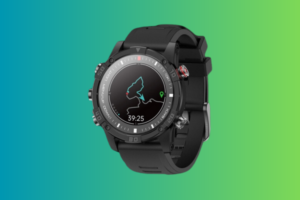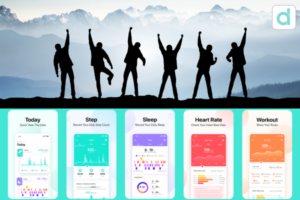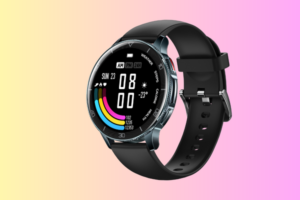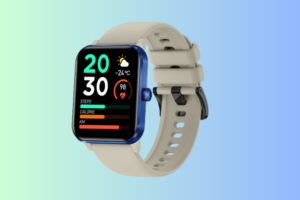Introduction
Are you a professional buyer of OEM & ODM Wear OS smartwatches looking to customize your products? If so, you’re in the right place. In this post, we’ll take a comprehensive look at the top manufacturers of Wear OS smartwatches, assessing their strengths and weaknesses, and examining their customization capabilities. We understand the challenges that come with finding the right manufacturer, especially when it comes to creating unique products that reflect your brand. That’s why we’re here to guide you through the process and help you find the right manufacturer that can deliver the quality and customization you need to succeed. By the end of this post, you’ll have the information you need to make informed decisions and find the ideal partner to meet your business needs. So, let’s get started!
Understanding Wear OS smartwatch technology
What is Wear OS smartwatch?
Wear OS differs from other smartwatch operating systems in that:
Wear OS is a smartwatch operating system developed by Google. It was formerly known as Android Wear until it was rebranded in 2018. It was specifically designed for smartwatches and other wearable devices, and it allows users to access all the important features of their Android devices directly from their wrists.
Wear OS differs from other smartwatch operating systems like watchOS and Tizen in several key ways. One of the biggest differences is that it is designed to work with a wide range of third-party applications, meaning that users have access to more apps than other smartwatch operating systems.
Another major difference is that Wear OS is designed to be highly customizable, so users can personalize the watch face, settings, and notifications to suit their needs and preferences.
Finally, Wear OS also integrates seamlessly with Google Assistant, which means users can use voice commands to send messages, make calls, and control other smart devices in their homes without having to touch their watch.
Wear OS features and benefits:
Wear OS is an operating system designed for smartwatches with a range of features and benefits, including:
Compatibility with Android and iOS: Wear OS works with both Android and iOS, making it easier for users to sync their watches with their smartphones.
Customization: With Wear OS, you can customize your smartwatch with the watch interface, widgets, and apps from the Google Play Store to personalize your experience.
Fitness tracking: Wear OS supports fitness tracking features such as pedometry, heart rate monitoring, and workout tracking.
Navigation: Wear OS features Google Maps and Google Assistant for easy navigation and voice commands to access various smartwatch features.
Music control: Wear OS allows you to easily control your music, supporting playback on your smartphone or directly on your smartwatch.
Google Assistant and Google Pay: Wear OS allows you to access Google Assistant for quick help and allows Google Pay for mobile payments. Overall, Wear OS has a range of features that allow you to stay connected, access important information, and stay healthy without the need to access your smartphone. The OS also allows for customization to fit the user’s personality and preferences, making it easier to use over time.
Features and functions of Wear OS smartwatches:
Smartwatch Wear OS eSIM: Smartwatches with eSIM functionality have quickly taken the tech world by storm. Not only do they offer more freedom and greater independence from smartphones, but they also offer more convenience for users. Google’s Wear OS is one such technology that has successfully integrated eSIM into their smartwatches.
With Wear OS eSIM, users can receive calls, text messages, and notifications on their smartwatch without having to have their smartphone with them all the time. This means that users can leave their phones at home while they work out, shop, or run errands, while still being connected to friends, family, and work. In addition, eSIM allows users to add a second mobile number to their smartwatch or even connect to a completely different carrier network, making it easier to keep track of business and personal calls.
Another advantage of eSIMs is that they are much smaller and easier to manage than traditional SIM cards, making them easier to fit into a compact smartwatch. As a result, eSIMs make it easier for smartwatch designers to create watches that are thin, lightweight, and aesthetically pleasing.
GPS for Wear OS smartwatches: GPS technology has become an essential feature for many smartwatch users. wear OS smartwatches have built-in GPS capabilities that allow you to accurately track your fitness activities without the need for a smartphone. With GPS, you can track your runs, cycling routes, hiking trails, and more without having to carry your phone. This feature also allows you to measure your distance, pace, and speed, giving you a better idea of how you’re performing. Whether you’re training for a big race or just trying to stay fit, the Wear OS smartwatch with GPS can help you stay in good shape and reach your fitness goals.
Wear OS Hybrid Smartwatch: If you’re looking for a smartwatch that maintains the classic look of a traditional watch, Wear OS hybrid smartwatches may be just what you need. Combining the timeless design of an analog watch with the advanced features of a smartwatch, these watches offer the best of both worlds. With Wear OS hybrid smartwatches, you can receive notifications from your wrist, control your music, and track your fitness while still maintaining a sophisticated and elegant look. These watches also come with customizable watch faces that allow you to tailor your experience to your personal style. But what really sets Wear OS hybrid smartwatches apart is their battery life. Unlike traditional smartwatches that typically require daily charging, these watches can last for weeks or even months. That’s because they use a combination of mechanical and digital technology to conserve battery life.
Wear OS smartwatch NFC: Wear OS smartwatches with NFC are becoming increasingly popular among consumers. NFC refers to Near Field Communication technology, which enables contactless payments with just a tap on your smartwatch. With NFC, you can make mobile payments, transfer files and photos, and even unlock your watch, all with a single tap on your watch.
Wear OS smartwatches with NFC have other benefits as well. You can use your smartwatch to recharge your bus pass, access secure facilities, and more.
With the Google Pay app on your Wear OS smartwatch, you can set up your card details, view your transaction history, and check your balance, all from your wrist. It’s fast, easy, and secure. With Wear OS, you can do all of this with just a few taps.
Wear OS smartwatch VS Android
Wear OS system is highly mature, with smooth operation, many applications, and long battery life:
Wear OS is a highly mature operating system, developed and maintained by Google. It has undergone several refinements and improvements, resulting in a highly robust and stable platform that is both easy to use and highly functional.
One of the main advantages of Wear OS is its smooth operation. The system is responsive and runs smoothly on compatible smartwatch hardware, resulting in a seamless user experience. wear OS is optimized to run on low-power devices, so it uses minimal resources while still providing a highly engaging user interface.
Wear OS also has a large number of available apps that can be downloaded from the Google Play store. This includes popular apps for fitness tracking, communication, music streaming, and more. Developers can create their own apps using the Wear OS SDK, allowing for seamless integration with the platform’s core functionality.
Another key advantage of Wear OS is its battery life. Many Wear OS smartwatches offer long-lasting battery life, thanks to the system’s power-saving features. This also means you can wear your smartwatch all day without worrying about running out of battery.
Simple Android customization, few apps adapted to the watch, short battery life: Android customization for smartwatches is more straightforward than Wear OS, but it also has its limitations. Although Android smartwatches have access to the Google Store, the number of apps specifically designed for watches is relatively small compared to Wear OS. In addition, Android smartwatches tend to have shorter battery life than Wear OS devices because of the higher OS requirements and larger displays. While some Android smartwatches have power-saving modes to help conserve power, they are not as effective as the modes on Wear OS devices.
Factors to consider when customizing your Wear OS smartwatch
When customizing your Wear OS smartwatch, there are several factors to consider to ensure you get the most out of your device:
Watch face: The watch face is the first thing you’ll see when looking at your smartwatch. Consider choosing a watch face that is both aesthetically pleasing and easy to read. Customize the complications and widgets that appear on the watch face to display the information that is most important to you.
Apps: Choose the apps that best suit your needs and add them to your smartwatch. Make sure to test them to ensure they work properly on your watch.
Notifications: Customize the notifications that appear on your smartwatch to prevent being overwhelmed with unnecessary alerts. Decide which apps can send notifications to your watch and which ones you want to block.
Fitness tracking: If fitness tracking is essential to you, customize your smartwatch with apps that track your activity level, heart rate, and other health metrics.
Settings: Explore the settings menu to customize your smartwatch’s behavior to your liking, such as screen brightness, display timeout, and battery optimization settings.
Factors affecting the price of custom Wear OS smartwatch
With eSIM and without eSIM
As mentioned earlier, the presence of eSIM technology can affect the price of a custom Wear OS smartwatch. Compared to Wear OS smartwatches without eSIM technology, smartwatches with eSIM technology may cost more because of the additional cost of including cellular connectivity in the watch itself.
The technology required to integrate eSIM in Wear OS smartwatches typically adds to the overall production cost, which naturally translates into a higher price for the end user. In addition, the licensing fees required for eSIM technology can also add to the price.
The price difference between Wear OS watches with and without eSIM technology can vary significantly by brand, design, and features. For example, Fossil’s 5thE generation smartwatch starts at about $199 without eSIM technology. And its 5th generation LTE smartwatch with eSIM technology starts at a higher price of about $349.
In general, if you’re looking for more autonomous connectivity in a smartwatch, then an eSIM-enabled Wear OS smartwatch might be worth the extra investment. However, if you’re primarily using your smartwatch as a companion device to your smartphone, then a Wear OS smartwatch without eSIM technology may be a more affordable option.
Cost-saving tips for professional buyers
Source: Counterpoint’s BoM Analysis Service
Note: Figures may not add up to 100% due to rounding.
Taking the Google Pixel Watch bill of materials above as an example, you can see that the components that have a large impact on the manufacturing cost of a smartwatch are the display system, processor and storage, case and water resistance, connectivity, battery, and sensors.
As a smartwatch buyer, understanding the cost components of smartwatch manufacturing can help you identify cost-saving tips without sacrificing performance and quality:
Display system: As the most expensive component, choosing a smaller display size and lower resolution display can save money without sacrificing too many features.
Processor and storage: Choosing a slightly less powerful processor or a lower storage capacity can save money without compromising performance.
Enclosure and water resistance: Avoiding expensive enclosure materials can save money. Choosing a smartwatch with only basic water resistance can help keep costs down, rather than choosing a more expensive waterproof option.
Connectivity: If you don’t need cellular connectivity, choosing a smartwatch that only supports Wi-Fi and Bluetooth can help you save money.
Battery: Choosing a smartwatch with a smaller battery that still has sufficient battery life can reduce costs.
Sensors: Choosing sensors that are critical to the desired function can help save money instead of adding unnecessary sensors to your smartwatch.
Battery life for Wear OS smartwatches For many buyers, the battery life of Wear OS smartwatches is an essential consideration. The exact duration of the battery depends on various factors such as intensity of use, type of apps used, screen brightness, etc.
Many modern Wear OS smartwatches are equipped with low-power processors and numerous power-saving modes, such as battery saver mode and extended battery life mode, which can greatly improve battery life. However, keeping watch apps running in background mode can also put a strain on a smartwatch’s battery life.
Depending on usage, most Wear OS smartwatches can last a full day or more. Some brands offer watches that can provide up to two days of battery life. If battery life is a top priority for you, you may want to consider purchasing a model designed for long battery life.
Best practices for budgeting and estimating costs
Estimating the cost of a Wear OS smartwatch is an important part of budgeting for smartwatch development. Here are some best practices for budgeting and estimating the cost of a Wear OS smartwatch:
Research component costs: Find out the market cost of the components you expect to use when creating your Wear OS smartwatch. This will include the cost of the processor, sensors, screen, battery, and other materials.
Consider development costs: The cost of developing the software, designing the hardware, and programming the interface is part of the cost estimate. You will need to take into account the cost of development tools and associated software licensing fees.
Evaluate production costs: Estimate the costs associated with manufacturing the smartwatch, including assembly, labor costs, and quality control.
Include testing and certification: You must take into account the cost of testing the product, software, and electronics. fees for FCC, CE, and other regulatory board certifications must also be included.
Budget for marketing: You will need to invest in the right promotional strategies to attract the attention of more customers. This will include creating a website, digital marketing, and customer support.
The top maker of Wear OS smartwatches
Wear OS is an operating system developed by Google and designed for smartwatches and other wearable devices. It was originally launched as Android Wear in March 2014 but was rebranded as Wear OS in March 2018. Wear OS offers a wide range of features, including voice commands, fitness tracking, mobile payments, and notification alerts. It is compatible with smartphones running on Android and iOS operating systems. With its Google Play store, Wear OS offers a wide range of apps specifically for wearable devices, allowing users to customize their devices to suit their needs. Here are some popular Wear OS smartwatch brands.
Fossil
Fossil is a well-known manufacturer of Wear OS smartwatches and offers a range of products in their smartwatch line. Their flagship Fossil Gen 5 smartwatch has many features, including a heart rate monitor, GPS tracking, NFC payments, and Google Assistant integration. The Fossil Sport smartwatch is lightweight, and durable and has built-in GPS, heart rate monitoring, and NFC payments, making it ideal for fitness enthusiasts. The Collider Hybrid is a hybrid smartwatch that combines the classic look of a traditional watch with the functionality of a smartwatch, including activity tracking, smartphone notifications, and customizable buttons.
Samsung
Samsung is the leading manufacturer of Wear OS smartwatches, with a range of products for different lifestyles. Their newest and most advanced Wear OS smartwatch is the Galaxy Watch 4, which comes in two sizes and features enhanced health and fitness tracking, a customizable watch interface, and longer battery life. the Galaxy Watch Active 2 is designed for fitness enthusiasts and includes advanced fitness and wellness features such as automatic exercise detection, sleep tracking stress monitoring, customizable watch interface options, and water resistance.
Google has a strong presence in the Wear OS smartwatch market with a wide range of smartwatches that integrate seamlessly with Android smartphones and Google services. Their products integrate seamlessly with Android smartphones and Google services. Google Pixel Watch is one of the company’s popular smartwatches that offers improved health tracking, built-in GPS, and integration with Google Assistant, among other features. Google has also partnered with the Fossil Group on smartwatches such as the Fossil Gen 5 with heart rate monitoring, NFC payments, and customizable watch faces, and the Skagen Falster 3 with its sleek design and modern features. Google has also partnered with other manufacturers of smartwatches such as the TicWatch Pro 3, known for its long battery life and dual display technology Google has also partnered with other manufacturers to produce smartwatches such as the TicWatch Pro 3, known for its long battery life and dual display technology.
Suunto Oy
Suunto Oy is a Finnish company that specializes in outdoor sports watches, dive computers, and instruments used by adventurers around the world. Suunto 7 is Suunto’s product with Wear OS and is designed for active users looking for a balance between lifestyle, technology, and sports. Suunto 7 features more than 70 sports modes, offline maps, and support for the Google Play Store support, making it a versatile and highly functional smartwatch. It also includes basic smartwatch features such as contactless payments, music streaming, and message notifications.
Out of the Box/Mobvoi
Mobvoi is a leading manufacturer of Wear OS smartwatches that prioritizes quality devices at affordable prices. Their lineup includes the TicWatch Pro 3, a high-end smartwatch with the latest Qualcomm Snapdragon Wear 4100 processor, which offers significant improvements in performance and battery life. It also has a dual-layer display that provides excellent outdoor visibility while saving battery life. The TicWatch E3 is another popular model with a lightweight design and built-in GPS and heart rate monitoring. It lasts up to two days on a single charge and supports a variety of iOS and Android devices. Mobvoi also offers more affordable options such as the S2 and E2 models, which feature advanced fitness tracking, are waterproof to 50 meters, and last an impressive two days of battery life on a single charge.
Skagen Denmark
Skagen Denmark is a well-known brand in creative design and technology, offering the Falster line of Wear OS smartwatches. Their latest smartwatch Falster 3 is equipped with advanced features such as GPS, NFC payments, heart rate monitoring, and Google Assistant. The watch also features a rotating crown dial for quick app navigation and a customizable watch interface.
Montblanc
Montblanc is a German-based luxury brand that makes high-end writing instruments, watches, leather goods, and accessories. In 2017, Montblanc launched its first smartwatch powered by Wear OS. Their latest smartwatch, the Montblanc Summit 2, features a 1.2-inch AMOLED display, a stainless steel case, and water resistance to 50 meters. It is powered by a Qualcomm Snapdragon Wear 3100 processor, has 1GB of RAM + 8GB of internal storage, a heart rate monitor, a built-in compass, and GPS.
Michael Kors
Michael Kors is a leading Wear OS smartwatch manufacturer known for its products that blend style and functionality. the Michael Kors Access Gen 5E features a Snapdragon Wear 3100 processor, GPS, NFC, and heart rate monitoring technology, and color options include rose gold and silver. the Access Bradshaw 2 features a classic stainless steel design with GPS, heart rate monitoring, NFC payments, and Google Assistant integration. The sporty Access MKGO includes GPS, heart rate monitoring, and NFC payments in a lightweight aluminum case and silicone strap.
TAG Heuer
TAG Heuer is a Swiss luxury watchmaker that produces high-quality Wear OS smartwatches. The brand’s line of smartwatches includes the flagship TAG Heuer Connected, which features a stainless steel case, ceramic bezel, interchangeable bands, GPS, NFC payments, heart rate monitoring, and up to 25 hours of battery life. The TAG Heuer Connected Modular is customizable, allowing for a variety of component changes, while including GPS, NFC, and heart rate monitoring. It is water resistant up to 50 meters.
Wear OS China Smartwatch
Mobvoi is a Chinese technology company that produces a range of smartwatches, including watches running Wear OS, a customized version of Wear OS that caters specifically to the Chinese market. It includes popular Chinese apps and services such as WeChat and Alipay and works with eSIM technology to provide mobile connectivity directly from the smartwatch. Mobvoi’s Wear OS China smartwatches include the TicWatch Pro 3 GPS, TicWatch E3, and TicWatch GTH. These watches feature heart rate monitoring, sleep tracking, and fitness tracking via Google Fit. Mobvoi’s smartwatches also include Google Assistant for voice commands and can be used to control smart home devices.
How to OEM&ODM custom Wear OS smartwatch?
Design Considerations and Trends for Custom Wear OS Smartwatches
Designing a custom Wear OS smartwatch can be a fun and engaging experience that allows you to express your unique style and preferences. Here are some design considerations and trends to keep in mind when customizing your Wear OS smartwatch:
Watch dial: The dial is the most visible component of a smartwatch, so it’s critical to pick one that reflects the user’s style. Popular styles include analog, digital, and hybrid watch faces. Users can also customize their watch dials to reflect different holidays or events.
Strap: The strap is another key aspect of customization. Users can significantly change the overall look of their watch by changing the strap. Leather or metal straps can give a watch a more classic or formal look, while silicone or nylon straps are more practical and durable for a wider range of users.
Color: Personalizing smartwatches with colors that match the user’s style is an important trend. While black or silver watches are still universal, bold and bright colors, including rose gold, are becoming increasingly popular.
Icons and widgets: Customizing the widgets and icons on a smartwatch can personalize the user’s experience. Popular widgets include fitness tracking apps, calendar apps, and weather apps.
Personalization: Consumers love the ability to create a unique device that reflects their style and personality. Customizable smartwatches that allow users to add their own designs, images, and fonts to the watch face are a growing trend.
Sustainability: Consumers are becoming more conscious of the materials used in their products, and choosing sustainable materials for smartwatches is becoming increasingly popular. For some customers, smartwatches that last longer and have replaceable parts are more attractive.
Health features: Many smartwatches now offer built-in health features such as pedometry, heart rate monitoring, and sleep tracking. These features are significant advantages for health-conscious users. Overall, the trend toward customizing Wear OS smartwatches is toward personalization, sustainability, and versatility, enabling users to create a unique device that reflects their style and values.
Customization options for Wear OS hardware and software
Hardware for Wear OS smartwatches typically includes the following components:
Screen or display: This is the most important component of a smartwatch. It displays the watch dial, notifications, and other applications. The screen can be of different sizes, resolutions, and technologies, such as LCD, OLED, AMOLED, and e-ink screens.
Processor: Wear OS smartwatches are equipped with a processor chip that controls the operation of the device, runs applications, and collaborates with each other.
Sensors: Wear OS smartwatches can include sensors such as heart rate monitors, step counters and accelerometers, GPS, and ambient light sensors.
Battery: The battery life of Wear OS smartwatches can range from a few days to a few weeks. It is usually charged using a charging cradle, magnetic connector, or wireless charging pad.
Buttons: Smartwatches are often equipped with physical buttons or knobs that can be used to navigate and quickly access or open certain apps.
Strap: The strap that comes with the watch can be made of leather, stainless steel, silicone, or nylon.
For the software side, common elements of smartwatches include:
Operating system:In other words, a smartwatch is primarily controlled by its operating system. Popular options for smartwatches include Wear OS, Apple Watch OS, Tizen, and Fitbit OS, among others.
Dials and apps: Wear OS smartwatches offer a myriad of dials to display various information, such as weather, stock prices, or fitness data. Users can install apps on the smartwatch and then access and control them through the watch screen.
Notifications: Wear OS smartwatches can receive a variety of notifications from smartphones, including phone calls, text messages, emails, and social media notifications.
Voice Assistant: Users can interact with the Google Voice Assistant on the watch via voice commands to control other devices, answer queries, or perform tasks.
Customization features: Customization features allow users to personalize their smartwatch to match their style and preferences, making it even more unique.
Best practices for working with manufacturers on custom projects
Redesigning the look based on customer needs
There are some best practices to follow when working with a manufacturer to redesign the look of a custom Wear OS smartwatch based on customer needs:
Understand customer needs thoroughly: Conduct market research and gather customer feedback to understand customer preferences, requirements, and the features they want to implement in their smartwatch design.
Establish clear design requirements and goals: Define specific design requirements, establish clear goals and specifications, and set realistic timelines. Ongoing communication with the manufacturer will help ensure that the redesign process proceeds as you want it to.
Work with an experienced manufacturer: Work with a manufacturer that has experience and expertise in smartwatch design and development, particularly with Wear OS. The manufacturer should have the necessary resources and capabilities to support your project from design to final production.
Develop a prototype: Develop a prototype to preview the final design and test the functionality of the product. This helps manufacturers and decision-makers assess the effectiveness of the design and make any necessary adjustments prior to mass production.
Test and refine the design: Thoroughly test the design to ensure that it functions as required by the customer. Make sure you have a contingency plan in place for unexpected situations during testing Following these best practices can help you get a customer-oriented smartwatch design that meets your customers’ requirements and ensures compliance with Wear OS compatibility. It can also ensure a satisfactory and successful outcome for your business.
SKD shipping form to reduce tariffs
Partnering with a smartwatch manufacturer for SKD (Semi Knocked-Down) shipping can help reduce tariffs and lower costs. Here are some best practices to consider for successful partnership Research regulations:
It is critical to understand your country or region’s regulations regarding SKD shipments: Check any specific requirements regarding packaging, labeling, and documentation, and ensure compliance with all applicable regulations.
Work with an experienced manufacturer: Choose a manufacturer that is experienced in SKD shipping and can support all phases of the process. Ensure they have an established supply chain network for cost-effective shipping and timely delivery of parts.
Work closely with the manufacturer: Work closely with the manufacturer to determine the most cost-effective and efficient route for SKD shipments. Obtain their input on part design and packaging to optimize shipments and reduce costs.
Carefully monitor shipments: Keep a close eye on shipments to ensure that all parts arrive on time and in good condition. Good communication with the manufacturer can help identify and resolve any problems quickly.
Assemble components efficiently: When assembling components, ensure that all parts are properly aligned and fitted together. Proper assembly ensures the reliability and durability of the finished product.
Conclusion
By the end of this article, professional buyers will have a comprehensive understanding of the Wear OS smartwatch platform, including its features, functionality, and customization options. Also, gain a comprehensive understanding of the top manufacturers in the market and a clear understanding of how to select the right manufacturer for their custom smartwatch project. Finally, gain insight into design considerations, hardware and software customization options, and cost-saving tips to help professional buyers make an informed decision and create a successful custom Wear OS smartwatch project.
In IWO, we offer OEM and ODM services for Wear OS smartwatches, customized to your specific requirements. Our products are carefully crafted so you can be confident in the quality of your custom smartwatch. If you are interested in learning more about our custom smartwatch products, please contact IWO today.
















